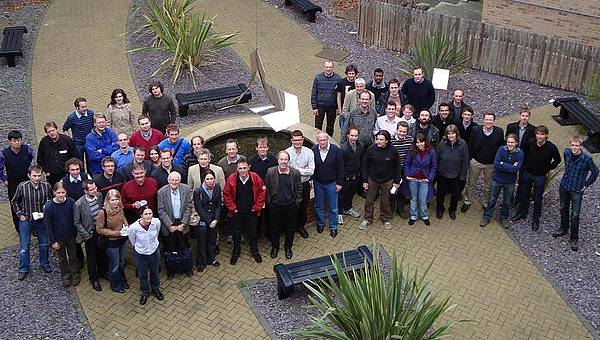Faraday meeting's hot science and ultracold molecules
A Faraday Discussion on the subject of ultracold molecules that was more than two years in the planning has proved to be exceptionally timely, says the meeting's Chair Professor Jeremy Hutson of Durham University.
"During 2008, several research groups around the world succeeded in producing ultracold molecules in their lowest rotation-vibration state for the first time." This, he adds has been a major goal for several years. "It will let us create and study new phases of matter in which even translational motion behaves quantum mechanically," he explains, "and it opens the way to a new form of quantum control for molecules."
An introduction to the meeting held in mid-April explained how such advances in scientists' ability to produce and trap cold molecules at temperatures around 1 Kelvin and ultracold molecules at 1 milliKelvin, are providing new insights into the fundamental behaviour of matter and chemical reactions. The same science might also enable future technological applications in areas such as quantum computing and materials science.
Studies of cold and ultracold molecules is a specific focus of the overall EuroQUAM programme, which deals with cold quantum matter in general. Hutson explains how the EuroQUAM programme provides a mechanism for groups across Europe to collaborate and share their results.
"Collaborations between experimental and theoretical research groups in particular have been crucial in recent developments," he says, "and EuroQUAM scientists are now ideally placed to exploit the new results."
 |
ESF's EuroQUAM programme began in July 2007 and is now at its mid-term.
Sixty scientists funded within the program participated in the Royal Society of Chemistry's Faraday Discussion No 142 in Durham, UK. Two of those scientists Professor Matthias Weidemueller of the University of Heidelberg, Germany, and Professor Johannes Hecker Denschlag, of the University of Innsbruck, Austria, highlighted an especially promising area of ultracold science - molecular quantum gases.
One particular focus of the work of Weidemueller's team is the use of sophisticated techniques for manipulating many-body quantum systems using coherent light. He revealed details of the photoassociation of ultracold dipolar molecules in the lowest rovibrational states.
This research involves merging two different atomic clouds at ultralow temperatures to produce ultracold molecules from lithium and caesium atoms using laser light. The team could store these molecules at 100 microKelvin at densities of just one hundred billion per cubic centimetre.
"Nobody anticipated that progress on the formation of ultracold molecular gases within ESF EuroQUAM would proceed so rapidly," Weidemueller explains, "With these developments, we are at the dawn of a new era for the understanding of complex quantum systems. In particular, the successful formation of electric dipoles at ultracold temperatures now paves the way to fascinating new phenomena including the self-assembly of exotic crystalline structures, the emergence of new quantum phases and the dynamics of ultracold chemical reactions."
Denschlag and his team have focused on Rb2 molecules. Their work investigates the quantum properties of weakly bound Rb2 molecules and the more tightly bound triplet Rb2 species. They start from a much colder cloud, provided by an atomic Bose-Einstein condensate. The team produces these different species using a special two-colour laser field. These Rb2 species are stable because in the ground state there is no energy to be released in a collision.
This ultracold stability could allow scientists to study and optimize the formation of so-called Bose-Einstein Condensates (BECs). In this unusual and fragile state of matter every atom or molecule is in exactly the same quantum state and so can be used to probe wave-particle duality, superfluidity, and other phenomena without having to isolate individual atoms or molecules.
Article by David Bradley, Science Writer

